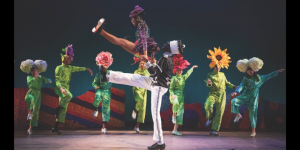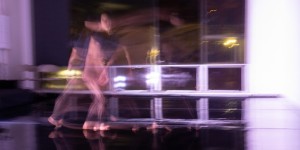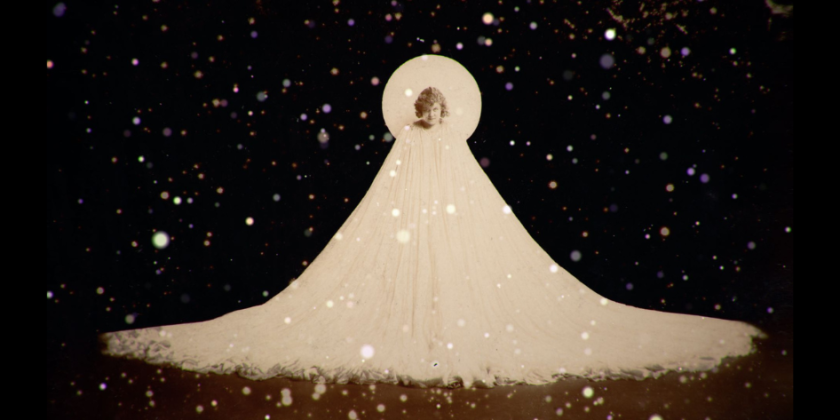IMPRESSIONS: "Sènsa" by Paul Maheke with Nkisi and Ariel Efraim Ashbel at Abrons Arts Center, Co-commissioned with the Performa 19 Biennial and Red Bull Arts New York

November 9, 2019
Choreography and Performance: Paul Maheke
Sound Design and Performance: Melika Ngombe Kolongo a.k.a. Nkisi
Lighting Design: Ariel Efraim Ashbel
In the Bantu language, the word sénsa means “coming to visibility,” “to appear from far away,” and “to reveal itself.” It seems like a word for magicians, priests, and alchemists. Their work, after all, transpires betwixt and between the before and the after. The moments of transformation they conjure are fraught with ambiguity. Their only certainty is uncertainty.

The forty-five-minute Sènsa connects this idea to Dr. Kimbwandènde Kia Bunseki Fu-Kiau’s 1991 groundbreaking book African Cosmology of the Bantu-Kongo: Principles of Life and Living. As such, the work unfolds like a sacred spiral, realized through high-contrast movement, music, and lighting. It made its U.S. premiere at Abrons Arts Center, co-commissioned with Performa 19 Biennial and Red Bull Arts New York, featuring choreography by Paul Maheke, a score by Melika Ngombe Kolongo a.k.a. Nkisi, and lighting design by Ariel Efraim Ashbel.
Upon entering the Underground Theater, the audience is swept into a literal spiral. The piece has us standing for its entirety, so we inadvertently merge into concentric circles around wherever and whenever Maheke performs. Body to body, we only part when he breaches our ring.

Long predating western colonization, the Kongo cosmogram expresses deep truths about the continuity of life. Titled dikenga in the KiKongo language, the word means the turning. That turning refers to the sun’s cycle around four cardinal points: dawn, noon, twilight, and midnight. But midnight doesn’t mean darkness anywhere and everywhere. When the clock signals the start of a new day, the sun is blazing in the world of the dead.
Inseparable from this is man’s journey over life itself. Through the heating up and cooling down of existence, a person participates in ancestralization. Death acts as a portal to a new life as a forebear.

Clad in an artfully torn costume worn over black basketball shorts, Maheke physically evokes the Kongo cosmogram. He commences by wriggling down a set of stairs and sitting for a while in the dark. Perhaps four times, he stations himself at different points around the room’s perimeter. Once there, he lifts a mirror to catch and reflect a beam of light. Later, he gallops sideways in a circle before paddle turning in a smaller one, his torso twisted, his arms extended up or out. For a few exhilarating passes, he traces an invisible cross through the space by sliding on his knees, like a rock star.
It’s dark and it’s crowded, so Maheke often registers as a ghostly figure. He drifts in and out of sight, your experience of him different than mine. Like all spirits, you don’t need to see him to know he’s there.

The score, played live by Nkisi, adds to the trippy experience. Fuzzy beats pound, ambient melodies purr, and staticky polyrhythms spar. Micro pauses destabilize expectations. Although the music is often loud, to understand it, you must listen and not interrupt with your thoughts.
At one point, Maheke lolls on the sidelines as Ashbel unleashes a dry thunderstorm. Light zooms across the pitch-black space, and it blinks in nested circles on the ceiling. The contradistinction between light and dark, stillness and activity startles me into euphoria. I begin to dance.
In that shadowy, thrumming, eerie space, it feels as if I’ve slipped into a river that runs between two banks of surety. Not here, not there, not everywhere, but not nowhere either, I am betwixt and between.














